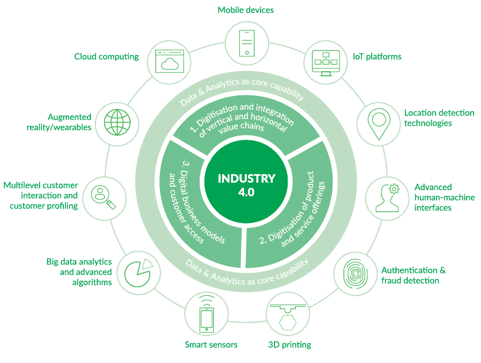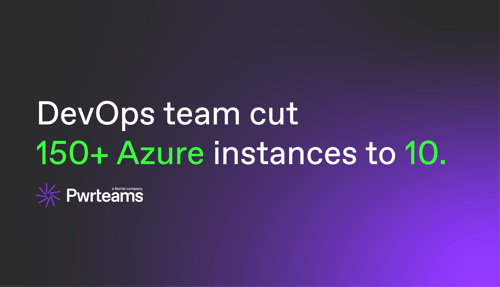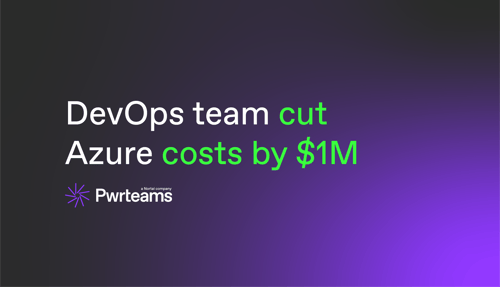Electrical Engineering: 5 Most Influential Trends to Watch in 2019

Although the industrial revolution is in full swing, the most buzzing tech trends have been stable for several years now. And it’s not because there’s nothing more to innovate. On the contrary, every trend, from AI to cybersecurity, is a realm so broad for development and research that we will need at least a decade to investigate the potential of each of them. However, we are not increasing the number of trends. We are diving deeper into the existing ones, finding new ways of application, more areas to optimize, and more expertise to share.
pwrteams is one of the top tech companies that adds its share to R&D in electrical engineering. Here are the most exciting trends we are exploring to continue the evolution.


Source
Now is the time when IIoT (Industrial Internet of Things) is word of mouth among big industrial businesses. Smart factories are everywhere these days, optimized, super-efficient, automated, and reliable. But is it so?
Digital factory implementation
In reality, smart manufacturing solutions are not ready for mass adoption yet. A visionary smart factory is still too expensive and needs professional human maintenance, which means additional costs for training. In fact, the search for technical talent is one of the top concerns of digital factory implementation.
The truth is, people need people to unlock the value of automation. That said, the success of the industrial revolution depends on the number of professionals who become more experienced in handling the latest trends. Little steps towards digitalization, one improvement at a time, is the winning strategy these days. Electrical engineering cannot “digest” all top trends at once, but transforming separate processes with the help of the latest tech is possible and beneficial.

Electrical engineering is one of the few fields that make use of the majority of the latest tendencies in tech. Robotics, drones, 3D printing, computer vision, cloud computing – you name it, and it’s there. Let’s focus on the trends that have the potential to bring far-reaching changes to electrical engineering and make smart factories a full-fledged reality.
5G
The 5G communication network enables increased capacity, eliminates delays, reduces energy consumption and provides a better connection to multiple devices. The next-generation network makes communication between devices effortless. Serving as a platform for sensors and other smart utilities on plants, factories, and cities. A seamless flow of data will speed up decision-making, predictive maintenance and any activities that require real-time data processing. We are making the first steps to the sixth generation network. It means that 5G tech will supposedly become cheaper and more available to industrial businesses.
On top of that, Students of the University of California, Irvine have invented an end-to-end transmitter-receiver that quadruples the speed of the 5G wireless communication standard. Huan Wang from NCIC Labs says that thanks to their invention, data centers will be able to get rid of kilometers of fiber-optic cables. This means that data farm operators will be able to do an extremely fast wireless transfer and save on hardware, cooling, and power.
IoE
We’re living through the stage of IoT, where millions of smart devices are connected to the global network. They are increasing awareness, processing power, energy independence, and more. Companies are striving to implement smart manufacturing through IoT: 73% of enterprises are investing in it, but only 6% consider their factories as digitized as possible. With more people and a variety of information being connected, we are moving beyond simple IoT to the phenomenon Cisco called the “Internet of Everything.”
It’s not about the connected physical devices anymore; IoE is the connection of four elements: people, things, information, and processes:
- people will become the nodes on the Internet
- things will become more context-aware
- data will become high-level rather than raw
- processes will work to deliver the right information to the right individuals at the proper time in the correct form
But there’s still a long way to go: Cisco predicts that we will reach a particular form of IoE in approximately ten years.
R+ Technology
The availability of 5G will bring more advances to the field of augmented reality. Actually, we are moving from AR to MR – mixed reality. This hybrid environment includes virtual objects into physical surroundings. The core difference lies in the tech behind these two Rs. Augmented reality uses a flat-screen while the mixed reality is headset-based (as for now). MR is said to change our interaction with the world. Just imagine engineers seeing the inside of engines and decision-making instructions right before their eyes rather than going through manuals.
In 2018, a Toshiba survey found that 82% of enterprises are looking to implement AR smart glasses in their processes during the next three years. Being able to see what you have to do is an advantage that cannot be underestimated. MR is already here, and it will become more widespread with the mass adoption of 5G and IoE.
Cybersecurity
Security remains a pressing issue, therefore, the smarter enterprises become, the more they should care about cybersecurity. By 2017, the number of cyberattacks on systems that control power generation, data centers, refineries, and gas pipelines exceeded a thousand in the US only. Hopefully, the latest tech trends will improve security to meet the evolving need of protecting networks of devices, automated facilities and especially volumes of gathered data.
Blockchain can be the answer as it allows secure information sharing and authentication without exposing data. Combined with the abilities of AI to predict threats and disclose vulnerabilities, it can fix security problems in the industrial sector.
To speed up the adoption of blockchain by enterprises, several energy whales have created an international non-profit organization Energy Web Foundation. They plan to develop a commercial version of a blockchain software platform for the energy sector as well as research other use cases for the distributed ledger.
Digital Twins
Digital twins are the gist of the most buzzing technologies of Industry 4.0. Gartner states that at least 50% of big industrial enterprises will launch a digital twin initiative by 2022. But for digital twins to be efficient, businesses will need to combine IoT devices, mixed reality, and fast connection. They’ll need it to enable a real-time flow of data, protect this data and add human expertise to interpret everything.
The technology is already being tested in energy facilities, automotive manufacturing, and healthcare. For more extensive adoption, it has to become cheaper and slightly more investigated. Moreover, the complexity of building digital twins also requires experienced hardware and software vendors as partners for industrial enterprises.

In conclusion, the primary technology trends in electrical engineering of 2019 don’t differ much from the ones of the previous year. Still, businesses spend millions to investigate use cases and improvements within every trend. From the omnipresent IoT to the less adopted digital twins, the industrial sector is one of the drivers of innovation.
Being a top software vendor in electrical engineering, pwrteams is growing its expertise in IoT and computer vision. We are partnering with industrial businesses and suppliers to develop software for smart factories and plants. If you’d like to know more about our electrical engineering solutions, don’t hesitate to contact our expert.
READ ALSO
- Engineering Design with AR, VR, and MR: Trends 2020
- Electrical Engineering: The 13 Most Influential Trends To Watch In 2020!
- MVP vs Poc vs Prototype: What Does Your Company Really Need?
 April 25, 2025
April 25, 2025
Massive consolidation: reducing 150+ Azure Front Door instances to 10
Read the post April 15, 2025
April 15, 2025
12 months of cloud cost optimisation: how 1 team saved $1M in Azure expenses
Read the post April 14, 2025
April 14, 2025
Pwrteams to support the expansion of the Swiss company LANGWATER
Read the postWrite your own
success story
with Pwrteams!
Share your details in the form, tell us about your needs, and we'll get back with the next steps.
- Build a stable team with a 95.7% retention rate.
- Boost project agility and scalability with quality intact.
- Forget lock-ins, exit fees, or volume commitments.
-1.webp?width=679&height=132&name=Mobile-App-Testing%20(1)-1.webp)